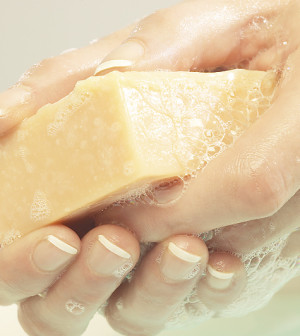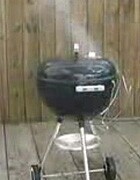- Skip Storing This Everyday Product in the Fridge Door
- Green Tea + B3 Pairing May Boost Brain Health
- Navigating Your Midlife Crisis: Embracing New Possibilities
- City Raccoons Showing Signs of Domestication
- Mapping the Exposome: Science Broadens Focus to Environmental Disease Triggers
- One Week Less on Social Media Linked to Better Mental Health
- Your Brain Changes in Stages as You Age, Study Finds
- Some Suicide Victims Show No Typical Warning Signs, Study Finds
- ByHeart Formula Faces Lawsuits After Babies Sickened With Botulism
- Switch to Vegan Diet Could Cut Your Greenhouse Gas Emissions in Half
Tips for Beating BBQ Burns


Summer’s the season for grilling outside, but mishaps can happen even to the most experienced grillmaster.
Before lighting up your grill, get up to speed on how to treat minor burns. It’s also a good idea to learn how to recognize signs of a more serious injury, advised Dr. Sampson Davis, an emergency room physician at Meadowlands Hospital Medical Center in New Jersey.
“Although most burns can be treated at home, more serious burns can lead to infection, dehydration and even hypothermia, or the loss of body heat,” he said.
There are three levels of burns. First degree burns affect only the outer layer of skin, causing redness, swelling and pain, according to the U.S. National Library of Medicine. Second-degree burns damage the outer layer of skin as well as the layer underneath. These burns cause the same symptoms as second degree burns, along with blistering. Third-degree burns are the deepest and may burn or destroy down to the deepest layer of skin, as well as the tissues underneath.
Davis offered the following safety and first aid tips:
- Assess the injury. The severity of a burn depends on how deep it is and how much skin has been damaged. A burn that appears minor (first or second-degree) likely does not need treatment by a medical professional. Any burns that appear very deep should receive immediate medical attention. If it’s unclear how severe a burn is, it’s a good idea to have it evaluated by a doctor.
- Avoid the source of the burn. After a burn, move quickly away from the source of the heat. Prolonged exposure can make a burn worse.
- Remove clothing. Be sure to take off any clothing covering the affected area. Fabric can trap heat and make the burn more severe.
- Cool the burn. Place the affected skin under cool running water for several minutes. Do not use a high-pressure spray. Instead, allow cool water to run over the burn for as long as possible. This can be done with tap water in the sink or a hose outside.
- Apply antibacterial ointment. This topical medication can ease pain and help a burn heal. Any product placed on a burn should be water-soluble. Do not apply butter or oil to a burn. This will trap heat and make a burn deeper. If a blister forms on the skin, do not pop it or peel it away.
- Use pain medication if necessary. Taking over-the-counter pain medication, such as ibuprofen or acetaminophen, can help ease pain associated with a burn. If these non-prescription medications are not strong enough, seek medical attention.
- Use a bandage. As a burn heals, it’s important to keep it covered. Skin damaged from a burn is at greater risk for bacterial infection. When outside or in public, be sure to wear a bandage. It’s also a good idea to wear loose, natural clothing, such as light cottons. Harsher fabrics may irritate the affected skin.
In some cases, burns may need to be treated in the emergency room. The following symptoms are warning signs of a more serious injury:
- Dizziness
- Confusion
- Weakness
- Fever
- Chills
- Shivering
- Severe pain
If a burn gets increasingly red, swollen and painful and if it begins to drain, seek immediate medical attention. These are symptoms of a serious skin infection, known as cellulitis.
Call 911 right away if the skin turns black or if blisters form on the face, genitals, or around the wrist, arm, leg or ankle.
Even if these symptoms are not present, certain burns still require evaluation by a doctor, such as burns to the face or genitals, burns that cover most of a hand or foot, second-degree burns covering a particularly large area, such as more than one arm or the size of the back.
More information
The U.S. National Fire Protection Association provides more grilling safety tips.
Source: HealthDay
Copyright © 2025 HealthDay. All rights reserved.










